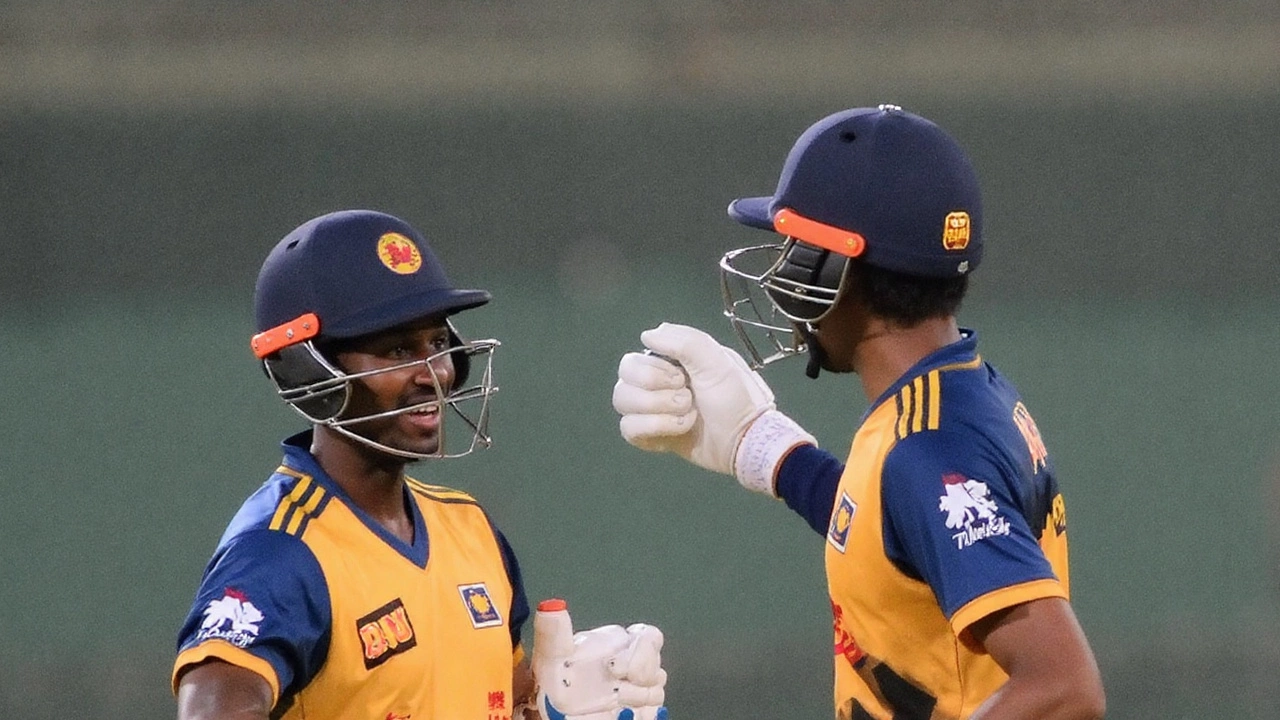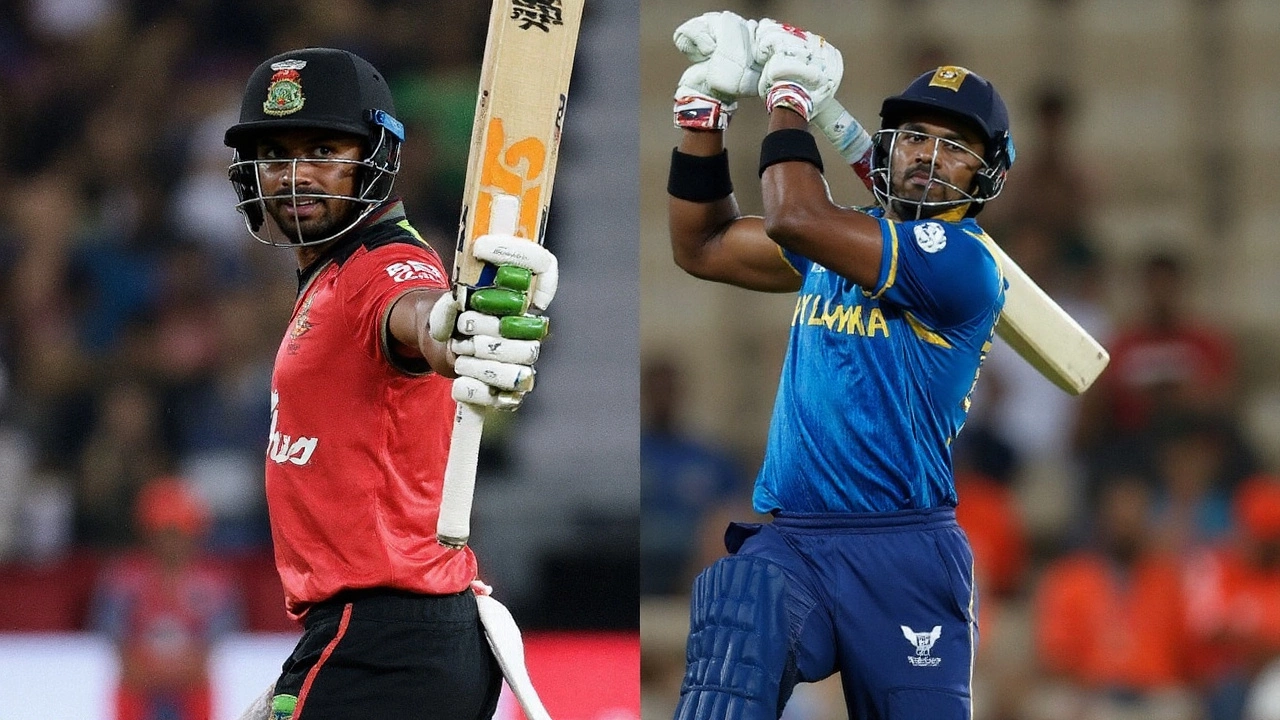By Ethan
A T20I innings almost never begins with back-to-back wicket-maidens. Sri Lanka pulled it off in Abu Dhabi and never let go. The six-time champions opened their Asia Cup 2025 campaign with a clean, controlled six-wicket win over Bangladesh, chasing 140 with 5.2 overs to spare at the Sheikh Zayed Stadium.
Captain Charith Asalanka won the toss, backed his quicks, and got exactly what he wanted. Nuwan Thushara and Dushmantha Chameera bowled wicket-maidens to open the game, leaving Bangladesh 0/2 and stunned. It was only the second time in T20I history that a team started with two consecutive maiden overs, and the shock stuck with Bangladesh through the powerplay.
Powerplay choke leaves Bangladesh reeling
Abu Dhabi can be unforgiving early on. Thushara’s skiddy angle and Chameera’s pace tunneled through the top order, and the returning Wanindu Hasaranga tightened the screws in the middle. By the time the first 10 overs were done, Bangladesh were stuck at 53/5, miles behind the tempo required for a competitive total.
Just when a collapse looked inevitable, Shamim Hossain and Jaker Ali rebuilt with calm and smarts. They picked the right matchups, nudged singles, punished width, and kept the scoreboard moving without taking wild swings. Their unbroken 86-run sixth-wicket stand changed the shape of the innings. Shamim finished unbeaten on 42; Jaker was 41 not out. Bangladesh reached 139/5—still light, but a score with something to bowl at after being 0/2 to start.
Hasaranga’s return from a hamstring injury mattered beyond the wicket column. His control at a time when dew often loosens grip in Abu Dhabi held Bangladesh in check. Around him, Sri Lanka’s seamers stuck to a simple but ruthless plan: hit hard lengths, keep stumps in play, and make Bangladesh force the pace. The collective discipline is what stood out—no freebies, no panic when the partnership grew.
- Bangladesh: 139/5 in 20 overs (Run rate ~6.95)
- Key stand: Shamim Hossain and Jaker Ali, 86* for the 6th wicket
- Sri Lanka: 140/4 in 14.4 overs (Run rate ~9.55)
- Victory margin: 5.2 overs to spare (significant net run-rate boost)

Nissanka sets the pace; Sri Lanka finish with a surge
Chasing on this ground often feels simpler, and Pathum Nissanka made it look that way. He found his timing early, driving square and lofting straight, and never let Bangladesh’s attack settle. His half-century—50 off 34—set the tone for a chase that stayed ahead of the rate from ball one.
With Nissanka dictating, Kusal Mendis eased into the role of foil, picking up gaps and rotating the strike. Kamil Mishara, given a life after a dropped chance, cashed in with busy running and clean swings through midwicket. The chase had a professional feel: no rush, no stall, just steady acceleration until the result became a formality.
Bangladesh searched for a foothold—slower balls into the pitch, a few wide yorkers, fields pushed back to cut off the ropes—but Sri Lanka’s batting never drifted. The balance was right: take boundaries when on offer, live on singles when not, and target the shorter side when the wind offered a nudge. Abu Dhabi’s outfield can be quick; the Lankans used it.
Strip away the surface numbers and the pattern is clear. Sri Lanka won the match in the first four overs with ruthless new-ball execution, then protected that advantage with tidy middle-overs bowling. The batters didn’t chase shadows; they matched the calculated approach with a clean, modern T20 chase. When a team nails both ends of the game—new-ball pressure and powerplay scoring—the middle rarely becomes messy.
There’s a bigger picture here too. This is Sri Lanka’s first outing of the tournament, and the 6-wicket win with time to spare gives them early control of Group B on net run rate. For Bangladesh, who beat Hong Kong in their opener, this is a reminder that strong lower-order partnerships can only do so much if the top order leaves them a rescue job. The top six will need a reset—clearer triggers against pace, better back-foot options, and a plan to disrupt high pace and hard lengths.
Asalanka’s use of resources was sharp: pace up front, Hasaranga as the hinge in the middle, and fielders in the ring to dare the single while cutting off the two. Bangladesh’s best phase came when they resisted the big shot and dragged the game deep; that method could serve them well in their next outing. But against this Sri Lankan attack, starting at 0/2 put them in a hole too deep to climb out of.
In the stands, the Sri Lankan fans found their voice early and never had to lower it. On the field, the team looked settled, balanced, and unfussed. One game doesn’t define a tournament, but it can set the tone. Sri Lanka’s tone in Abu Dhabi was simple: bowl straight, field hard, chase briskly, and leave no loose ends.
